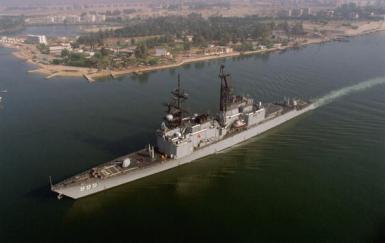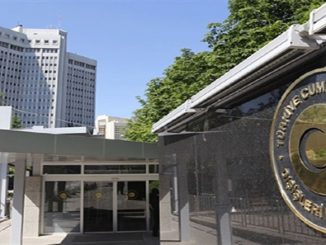
As al-Sisi government is seeking to secure $12 billion in loans from the International Monetary Fund (IMF) to save its economy, it also needs to deal with a new financial challenge, and is looking at trade through the Suez Canal in order to raise more funds by increasing tariffs, Lisa Ward wrote in an article in The Fuse, titled: “Suez Canal’s Hefty Tariff Increase Pushes Tanker Owners to Use Alternate Routes.”. Liza Ward is an oil trader based in the North of England, is the Co-Founder of the #OOTT (Organization of Oil-Trading Tweeters) hashtag on Twitter.
The expansion of Suez Canal that cost $8.4 billion, and was supposed to aid in the recovery of Egypt’s economy,” so far has not been generating enough revenue,” she said.
Suez Canal expansion aimed “to maximize its competitiveness versus other routes and increase the Suez Canal revenues exponentially, from $5.3 billion up to $13.2 billion in 2023, making a considerable contribution towards Egypt’s national income. However, the reduction in global trade due to the continually low oil prices would cause ships to go thorough other routes as the Egyptian government is raising the tariffs on the usage of the passageway.”
During 2014, the total amount of total oil that passed through the canal was 1.306 billion barrels of oil equivalent, and of those volumes, 638.3 million barrels were crude oil. However, one year on since the expansion, there’s been an 8.3% drop, equating to 30.13 million barrels of crude oil.
She said that in addition, “the government’s move to increase taxes on ships that use the Canal is likely to backfire, as oil-at-sea volumes will find other routes to reach their destinations.”
Since the expansion’s opening, it has generated negative revenues due to the decrease in international trade. As a result, this has led to a price increase in attempt to revive positive revenue. Fees paid by ship owners using the Canal bring in on average $5 billion a year into the Egyptian economy, which makes it one of the best revenue streams for the government.
“Over the past three months, the Suez Canal prices have increased on average by a hefty 26 %to $386/mt per vessel in order to make up for lost revenue,” wrote Lisa Ward.
This has pushed several countries and companies to find and use alternative maritime routes, such as the Panama Canal and even sailing around South Africa, in an attempt to avoid such exuberant fees. Companies and shippers can save $235,000 per voyage on average by using the route chartered around South Africa, making it even more beneficial in the current climate of low oil prices.
In fact, the price is controlled by the Suez Canal Authority (SCA) and is heavily influenced by several factors, one being Egypt’s current economic situation. Egypt is passing through one of the harshest economic crisis in the country’s with food shortages causing unrest. In the same context, the Egyptian authorities and the International Monetary Fund (IMF) are in the final stages of negotiations over the $12 billion lending program in an attempt to reduce the budget deficit and aid the economy’s recovery, currently seen to be heading in the right direction due to the implementation of strict reforms.
One of the reforms was the introduction of a VAT increase to 13%, which was implemented with effect from September 8, 2016. The government plans to further increase the VAT to 14 %starting in July of next year. As a result of the VAT law, “one can noticeably see the effects this has had on the shipping costs via the Suez Canal increasing prices up from $339/mt to $380.50/mt,” said Liza Ward.
In the end, Liza Ward expected that there could be a relief in Suez Canal revenues if oil prices rise.” We could expect to see higher volumes of traffic via the Suez Canal as it becomes more affordable within profit margins in order to keep up with world oil demand. So, ultimately, for the Egyptian government, it will find some relief if oil prices rise,” she said.



